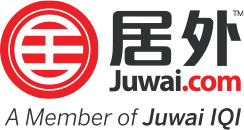Asia News
- Home
- News
- Asia News
You've successfully copied this link.
Luxury Expert: Defining wealth in Asia
Property Report South East Asia | January 26, 2012 Most of the high net worth individuals that I meet on a daily basis are business owners and top-level executives working for multinational companies. In Singapore, the executives tend to be mostly professionals from within service industries such as banking, finance and insurance, as well as those involved in luxury products, property developers and landlords. Such wealthy individuals often have second homes or do business in Singapore and therefore tend to keep their money in property or with private banks.
The latter they use as a place to park funds and for wealth conservation while looking for bigger profits outside the financial institutions. There are also many foreign property investors in Singapore from places like Indonesia and Russia who have interests in infrastructure and commodities back home, such as mining, diamonds and jewellery, water, timber and gas.
These people tend to be between 40 and 60 years old, although some of the younger HNWI are still in their 30s, and usually second generation. Younger entrepreneurs within the region seem to be more engaged in their work. In fact, the most successful ones are often working to prove their worth to businesses that were established by their parents. Meanwhile, other non-salaried entrepreneurs in Asia continuously diversify their investments. If their main business is going well, they tend to put in capable managers, along with a member of the family, while they go off in search of interesting new opportunities for returns.
By far the majority of wealthy Asians I know have invested heavily in property, and usually by much more than the statistics reported by private banks. I have noticed that beyond their core business, such wealthy individuals usually put the largest share of their wealth into property, and recently more and more are supporting worthy charities in the region. One of my good friends, Mrs P Fong, is a case in point. She’s a successful lawyer and a founding partner in the Capital Asia Group whose investments span the globe from Hawaii to Canada and Asia, but she never rests on her fortunes. “Property is my fundamental favorite investment and still the most secure,” she told me. “When Singapore stifles, we still have the US, Germany, the UK and Israel to invest in. We can buy syndicated raw land, farm land, buy distressed properties, just buy into opportunities. If you cast your global net, the yields are high with good potential capital returns. Beyond property, the only other secure investment is physical gold.”
The regional Asian rich tend to have their homes in their primary base, as well as homes in other prime city locations such as Singapore and Hong Kong. Previously, more tended to have a place in Hong Kong but more recently even the mainland Chinese have looked to Singapore as a place to own their second home (although how the Additional Buyers’ Stamp Duty affects this trend remains to be seen).
Another trend among wealthy Asians is to own second homes in resort locations such as Phuket, and I keep hearing about much more exotic investments such as Cambodia and Laos. Previously, it was mostly the Western expatriates based in Asia who bought mostly in Phuket, Bali and and to some extent on Samui. At the recent South East Asia Property Awards, as a judge, I assessed many fine properties in the region, many of which are considered prime purchases among wealthy individuals.
When it comes to furnishing their primary and second homes, the Asian rich are attracted by luxury brands. In Asia, property is also a symbol of status, so those that host at their homes will tend to buy branded, quality interiors such as Formitalia Tonino Lamborghini Casa and Aston Martin Design. The other statistically proven luxury they indulge in is cars. There are more Lamborghinis per capita sold in Singapore than anywhere else on earth and similar statistics have been quoted for Rolls Royce in Hong Kong, with China poised to become and equally extravagant parade of broken records anytime soon. Asian HNWIs also love high-end watches and wont hesitate to spend as much as US$1million for a rare timepiece. By contrast, wealthy Asians do not, as yet appreciate some of the other luxury items preferred by their western peers. The low penetration of private jets and superyachts, for example, is obvious when compared to the west.
The good news is that these luxury lines are therefore looking at enormous potential for mid- to longterm growth in the region. “Everyone gets charmed and hypnotised by luxury,”explained Mrs P Fong. “I am naturally attracted by all things beautiful, but I choose to remain modest. Also because, high consumerism diminishes capital. I take stock, seek wisdom – mitigate losses, re-arrange financing, throw excess baggage/stock, keep lean to go forward, watch cash flow and ensure I am able to meet financial obligations. Creating new business avenues generates more income flow, but the key is to remain positive always, plan and be in control of your own your destiny. This applies to all types of wealth – from money to health.”
About the Author: Alex Shlaen is an economist and holds an Executive MBA from Kellogg School of Management and HKUST. He is the founder of Panache Management Pte Ltd which represents Aston Martin Interiors, Tonino Lamborghini Casa, Formitalia design lines in Asia.He is also a serial real estate investor. He writes as The Luxury Expert for Property Report South East Asia.
Liked this article? Sign up for free to get Juwai Juwai Asia Market updates!
Sort By
- 2025
- 2023
- 2022
- 2021
- 2020
- 2019
- 2018
- 2017
- 2016
- 2015
- 2014
- 2013
- 2012
Tags
- australia
- china
- chinese buyers
- investment
- juwai
- property
- real estate
- residential
- united kingdom
- united states
Resources
Our Property Marketplaces
Juwai.com >
Global property portal available in Chinese
Juwai.asia >
Asia wide portal for global real estate
Juwai News
Subscribe to receive the latest news on Asian buyers, the Asia market, and Juwai.
Thank you for subscribing to Juwai News!
Sign up for a Juwai Account now for free to enjoy FREE download access to country-specific reports on Chinese property investments.
Do you want to sign up now? Or continue if you have already signed up or you will do it later.
Thank you!
You’ve just subscribed to get updates
to the Chinese Buyer Tips blog by email.
2025 © Juwai. All Rights Reserved Privacy Policy | Terms of Service


